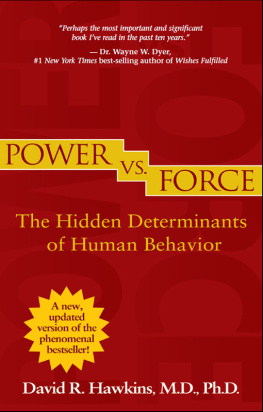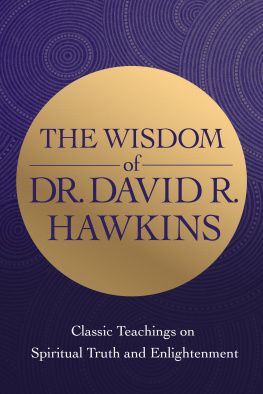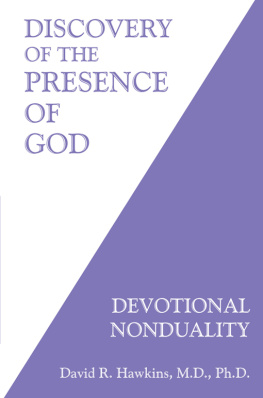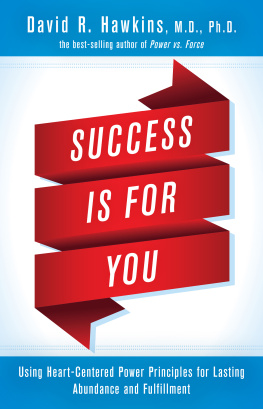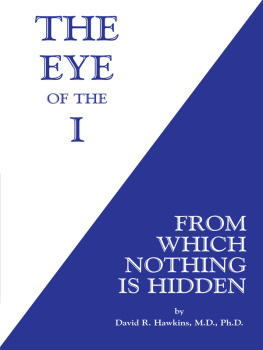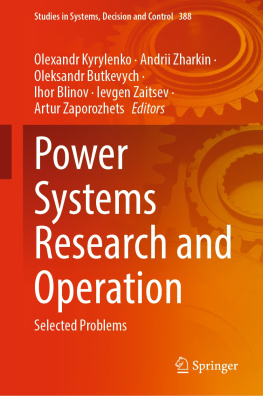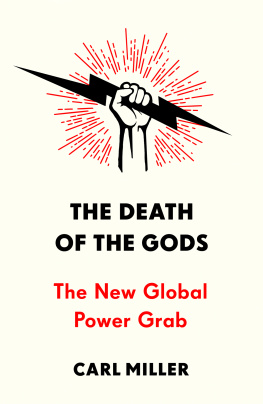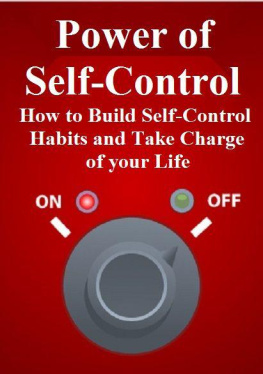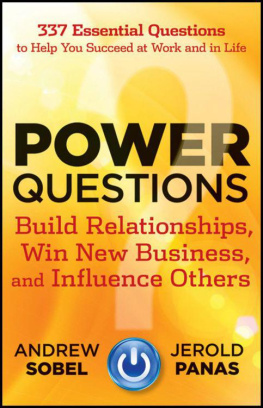ALSO BY DR. DAVID R. HAWKINS
Letting Go
Dissolving the Ego, Realizing the Self
Along the Path to Enlightenment
Healing and Recovery
Reality, Spirituality, and Modern Man
Discovery of the Presence of God
Transcending the Levels of Consciousness
Truth vs. Falsehood
I
The Eye of the I
Dialogues on Consciousness and Spirituality
Qualitative and Quantitative Analysis and Calibration of the
Levels of Human Consciousness
Orthomolecular Psychiatry (with Linus Pauling)

Copyright 1995, 1998, 2002, 2012 by David R. Hawkins
Illustration p. 47 reprinted by permission of the William Morris Agency, Inc. on behalf of the author. 1987 by James Gleick.
Published and distributed in the United States by: Hay House, Inc.: www.hayhouse.com Published and distributed in Australia by: Hay House Australia Pty. Ltd.: www.hayhouse.com.au Published and distributed in the United Kingdom by: Hay House UK, Ltd.: www.hayhouse.co.uk Published and distributed in the Republic of South Africa by: Hay House SA (Pty), Ltd.: www.hayhouse.co.za Distributed in Canada by: Raincoast: www.raincoast.com Published in India by: Hay House Publishers India: www.hayhouse.co.in
Cover design: Julie Davison Interior design: Riann Bender
All rights reserved. No part of this book may be reproduced by any mechanical, photographic, or electronic process, or in the form of a phonographic recording; nor may it be stored in a retrieval system, transmitted, or otherwise be copied for public or private useother than for fair use as brief quotations embodied in articles and reviewswithout prior written permission of the publisher.
The author of this book does not dispense medical advice or prescribe the use of any technique as a form of treatment for physical, emotional, or medical problems without the advice of a physician, either directly or indirectly. The intent of the author is only to offer information of a general nature to help you in your quest for emotional and spiritual well-being. In the event you use any of the information in this book for yourself, which is your constitutional right, the author and the publisher assume no responsibility for your actions.
Previously published by Veritas Publishing (ISBN: 0-9643261-1-6) 1st Hay House printing, February 2002
Library of Congress Cataloging-in-Publication Data
Hawkins, David R., 1927
Power vs. force : the hidden determinants of human behavior / David R. Hawkins.
p. cm.
Originally published: Sedona, Ariz. : Veritas Pub., 1995
Includes bibliographical references and index.
ISBN 1-56170-933-6 (trade paper)
1. Consciousness. 2. Kinesiology. 3. Human behavior. I. Title:
Power versus force. II. Title.
BF311 .H385 2002
155.234dc21
2001039310
Tradepaper ISBN: 978-1-4019-4169-7
Digital ISBN: 978-1-4019-4170-3
15 14 13 12 4 3 2 1
1st revised edition printing, October 2012
Printed in the United States of America

The skillful are not obvious
They appear to be simple-minded
Those who know this know the patterns of the Absolute
To know the patterns is the Subtle Power
The Subtle Power moves all things and has no name

I maginewhat if you had access to a simple yes-or-no (Y/N) answer to any question you wished to ask? A demonstrably true answer to any question. Think about it.
Theres the obvious: Jane is seeing another guy? (Y/N?); Johnny is telling the truth about school? (Y/N?) But its only a short step to: This is a safe investment? (Y/N?), or This career is worthy of my pursuit? (Y/N?)
What if everyone had such access? Staggering implications suggest themselves immediately. Think again: What would happen to our ponderous and all-too-often flawed judicial system if there was a clear, confirmable answer to the proposition, John Doe is guilty as charged? (Y/N?)
What would happen to politics as we know it if all of us could ask the question, Candidate X honestly intends to fulfill this campaign promise? (Y/N?)and all of us got the same answer?
And what would happen to advertising, period?
You get the idea. But the idea gets bigger, fast. What happens to nationalism (Nation X is really dedicated to the overthrow of democracy?)? To government (This bill does in fact protect the rights of citizens?)?
What happens to The check is in the mail?
If, as has been said, man learned to lie an hour after he learned to talk, then a phenomenon such as the one were discussing would be the genesis of the most fundamental change in human knowledge since the beginning of society; the transformations it would wreakin fields from communications to ethics, in our most basic concepts, in every detail of daily existencewould be so profound that its difficult to even conceive what life would be like in a subsequent new era of truth. The world as we know it would be irrevocably changed, right down to its very roots.

kinesiology: n. The study of muscles and their movements, esp. as applied to physical conditioning. [Gk. Kinesis, movement (kinein, to move) + -logy.]
The study of kinesiology first received scientific attention in the second half of the last century through the work of Dr. George Goodheart, who pioneered the specialty he called applied kinesiology after finding that benign physical stimulifor instance, beneficial nutritional supplementswould increase the strength of certain indicator muscles, whereas hostile stimuli would cause those muscles to suddenly weaken. The implication was that at a level far below conceptual consciousness, the body knew, and through muscle testing was able to signal, what was good and bad for it. The classic example, cited later in this work, is a universally observed weakening of indicator muscles in the presence of a chemical sweetener; the same muscles strengthen in the presence of a healthful and natural supplement.
In the late 70s, Dr. John Diamond refined this specialty into a new discipline he called behavioral kinesiology. Dr. Diamonds startling discovery was that indicator muscles would strengthen or weaken in the presence of positive or negative emotional and intellectual stimuli, as well as physical stimuli. A smile will make you test strong, while the statement I hate you will make you test weak.
Before we go any further, let us explain in detail exactly how one tests, especially as readers will certainly wish to try this themselves. Here is Dr. Diamonds outline, from his 1979 book, Your Body Doesnt Lie, of the procedure adapted by him from the classic description in H. O. Kendalls Muscles: Testing and Function (Baltimore: Williams & Wilkins, 2nd ed., 1971).
It takes two people to perform a kinesiological test. Choose a friend or a family member for testing. Well call him or her your subject.
1. Have the subject stand erect, right arm relaxed at his side, left arm held out parallel to the floor, elbow straight. (You may use the other arm if you wish.)

